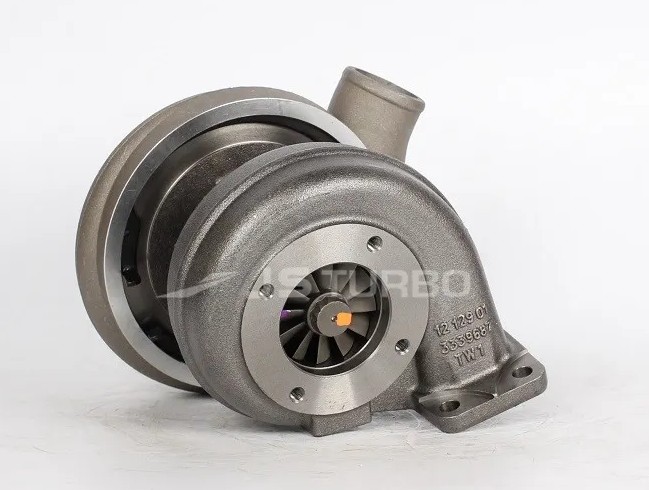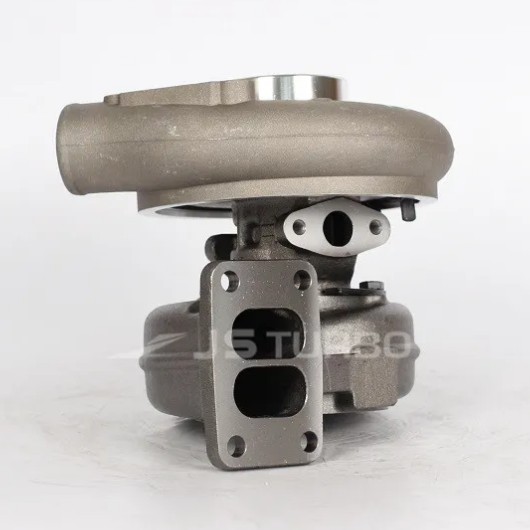
What are the structural components of a turbocharger
2023-03-22 10:001. Structural composition of turbocharger
The turbocharger includes a turbine casing, a compressor casing, an intermediate casing, a turbine, a pump wheel, a floating bearing, an exhaust port valve, and an actuator. The turbine and pump wheel are assembled on the same shaft and installed in the turbine housing and compression housing through two floating bearings. There are oil passages in the intermediate body to lubricate and cool the bearings, as well as sealing devices to prevent oil leakage into the compressor or turbine.
Parts such as turbine wheel, compressor wheel, and seal sleeve are installed on the turbocharger shaft to form the turbocharger rotor. The exhaust gas pressure from the exhaust manifold causes the turbine to rotate at high speed, and the pump wheel on the coaxial shaft rotates along with it to inject air into the cylinder. The rotor becomes particularly hot and rotates at high speed due to direct impact from exhaust gas, so it must be heat resistant and wear resistant, that is, the turbine is made of super heat resistant alloy or ceramic.
The rotor rotates at a rotational speed exceeding 100000 r/min and up to 100000/min, so the balance of the rotor is very important. The supercharger shaft must withstand alternating bending and torsional stresses during operation, so it is generally made of alloy steel with good toughness and high strength.
The structure of turbocharger bearings is one of the keys to the reliability of automotive turbochargers. Modern automotive turbochargers all use floating bearings. The floating bearing is actually a circular ring that fits around the shaft. There is a gap between the ring and the shaft, as well as between the ring and the bearing block, forming a double oil film, that is, the ring floats between the shaft and the bearing block. The floating bearing is made of tin lead bronze alloy, and the bearing surface is plated with a layer of lead tin alloy or metal indium with a thickness of 0.005~0.008mm. When the supercharger is working, the floating bearing rotates between the shaft and the bearing seat.
The axial thrust generated by the supercharger during operation is borne by the thrust bearing arranged on the compressor side. To reduce friction, four oil distribution grooves are machined on the thrust surfaces at both ends of the integral thrust bearing; An oil inlet hole is also machined on the bearing to ensure lubrication and cooling of the thrust surface.
2. Working principle of turbocharger
The working principle of a turbocharger is to convert the power generated by exhaust gas into the pressure of the intake pipe. There are wind blades in the exhaust pipe and intake pipe. When the engine operates, exhaust gas is generated, and the blades of the exhaust pipe rotate, thereby increasing the intake pressure. When the throttle is increased, the exhaust gas will also increase, and the intake air will increase as the exhaust gas increases.


